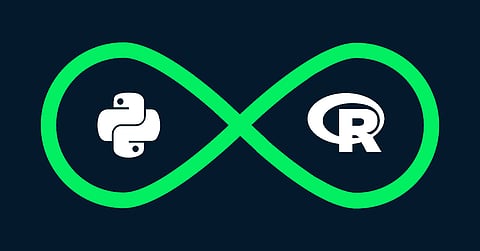

Both R and Python are excellent languages for data science. They play a pivotal role in initiating and modifying algorithms in machine learning like classification, regression, clustering, neural networks and algorithms in artificial intelligence. Simply put, these languages help in understanding the data better in order to make better-informed decisions. In order to have a clear picture as to which of the two languages should you study, read on to know how the two are different from each other. This article will throw light on R vs. Python – something that you should know before stepping into the world of data science.
Before digging into the differences between the two, it is important to have a brief idea about these languages.
R is a statistical language that is used for developing statistical software and data analysis. It is home to a wide range of libraries for graphical techniques. On the other hand, Python is an object-oriented, general-purpose, and high-level programming language.
Now that you have a fair idea as to what are these languages all about, let's dig deeper into the differences between them.
R is widely used for statistical analysis. It makes heavy use of statistical models for this. On the contrary, Python is more inclined towards data wrangling. If the objective is data analysis or making use of machine learning in a scalable production environment, Python steals the show.
The codes in Python are robust and do not require much maintenance. They are clear, easy to type as well as easy to interpret as well. However, in the case of R, the codes do require maintenance.
Data visualisation is a medium through which the collected data can be understood in a much easier way. On that note, R supports a wide range of packages that pave the way for excellent data visualisation. Though Python also supports certain libraries for data visualisation, a point to note is that they are a little on the complex side.
Speed is one of those parameters that everyone pays considerable attention to. Talking about R and Python on this front, R is a little slower than Python but not to the extent that one cannot handle.
Python is considered to be ideal for handling humungous data and building deep learning models. Talking about R, it is best for building statistical models as well as creating graphics and data visualisation.
If you are a beginner in the field of data science then there cannot be a better way to start with than opting for Python. Here, the learning curve is relatively linear and smooth. R might seem easy in the very beginning but as and when you proceed, you realize that the intricacies of advanced functionalities make it a little difficult to gain expertise.
Python doesn't have as many libraries as R. However, a point worth mentioning is that there are many dependencies between R libraries. This might pose a problem during the learning period.
For data analysis, packages have to be installed in case of Python whereas R stands the potential to handle basic data analysis without any requirement to install packages.
With major differences between R and Python being spoken, it won't be wrong to conclude that both of them are unique in their own way and choosing one out of the two depends on the user, his objective and the applications targeted.
Join our WhatsApp Channel to get the latest news, exclusives and videos on WhatsApp
_____________
Disclaimer: Analytics Insight does not provide financial advice or guidance. Also note that the cryptocurrencies mentioned/listed on the website could potentially be scams, i.e. designed to induce you to invest financial resources that may be lost forever and not be recoverable once investments are made. You are responsible for conducting your own research (DYOR) before making any investments. Read more here.
